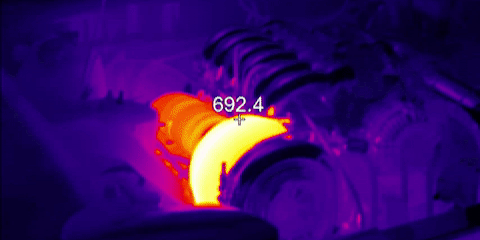Here's Exactly How Much Difference a Turbo Blanket Makes

On modified turbocharged cars, you often see the turbo wrapped with a curious piece of flexible metal-like material. This sleeve is called a turbo blanket, and it could save your engine bay from a lot of damage.
Turbochargers generate a lot of heat, but a blanket keeps the heat contained, preventing it from spreading throughout the engine bay and damaging vital plastic or rubber components. Because the temperatures get so hot, turbo blankets are made from a combination of heat-resistant fabrics, flexible metal, and in some cases, volcanic lava rock.
Now, most turbocharged cars can get by without a blanket because they aren't using the turbo enough to generate a significant amount of heat. But when people start to push 30 lbs of boost through their racing car's engine, high temps becomes a real issue.
Rob Dahm, a popular automotive YouTuber, had this problem. He built a turbocharged three-rotor RX-7, and judging by the video, his engine makes a lot of heat. So much so, in fact, that without any protection, the turbocharger will melt the paint on the hood above it.
Dahm wanted to see just how well a turbo blanket really worked, so he took temperatures of the turbo, the intake, and the engine bay with an infrared camera-both with and without the blanket installed.
The results are pretty crazy. The camera shows just how much of a difference the turbo blanket makes to contain heat. With it installed, only moderate amounts of warmth are visible in the intake. Without it, the whole turbo glows a bright yellow and reads as much as 760 degrees Fahrenheit. Many nearby components would be severely damaged if exposed to that much heat for any amount of time.
Dahm goes into detail about the test and his results, so if you're considering a turbo blanket or just want some good trivia for your next BBQ with friends, this video is definitely worth a watch.

 Yahoo Autos
Yahoo Autos 